- Home
- Robert Silverberg
This Way to the End Times: Classic Tales of the Apocalypse Page 12
This Way to the End Times: Classic Tales of the Apocalypse Read online
Page 12
Exploring the contents of the packing box was sad business. Here was the sum total of a man’s life work—a dozen leather-bound volumes, some reprints of his published papers, a box of plates taken at the coudé focus of the 60-inch, a worn account book, a few old letters and pictures. I feel guilty going through a man’s personal effects in this way, but that was Marley’s last wish.
Those sunspots are wrecking our communication systems. Traders went wild the other morning when stock market quotations came in all garbled up. For a while U.S. Steel was selling at 269 and Johns-Manville Corporation at 2-½.
Astronomy in Wall Street—it can happen!
SUNDAY, JANUARY 23
MORE CLOUDS AND MORE DESK work.
Preparing Marley’s notes for publication in the Astrophysical Journal has not been so dull as I supposed. It begins to look as if he observed far more than any of us ever suspected; more than anyone has ever observed before him. Apparently he got on the trail of one of the biggest problems in astrophysics—the spectrum of a nova before the outburst.
One of the essential characteristics of novae is that they all go through practically the same identical changes, but at quite different rates. That is, some novae run through their life history much faster than others. The changes themselves are so similar, however, that an expert can take one look at the spectrum of a nova and accurately predict its behavior in the future.
We have many long series of observations on novae after the outburst. The one section of their life history that is still blank is the pre-maximum stage. Since novae arise from stars that were originally faint and inconspicuous, it is only by accident that we know anything about them before the explosion occurred. But it seems reasonable to suppose that a star must give some indication of the approaching cataclysm in advance, so that disruption could be predicted long beforehand—if only these symptoms could be observed and recognized.
Somehow or other this was precisely what Marley had been able to do. Thus on March 7, 1948, writing of Nova Muscae, he says: “The spectral changes a star exhibits in the pre-maximum stage are so well-marked that I now have no hesitation in predicting not merely the day but the very hour of outburst. These changes are identical although proceeding at vastly different rates for various types of novae. For example, a ‘flash’ nova, such as N Puppis 1942, might pass through a series of changes in a week, that would be prolonged for months in the case of a ‘slow’ nova like N Pictoris 1925.”
Surely an observer as astute as George Lambert Marley would never have committed himself to such a statement unless he had the necessary and sufficient proof to convince a dozen men.
After poring over his notes till midnight I stepped outside the office to check the weather. Fog was drifting in from the ocean but the sky was still clear in the northeast. At first I thought a forest fire had broken out behind the San Gabriel mountains, for the whole heavens in that direction were suffused with a dull crimson glow. Then I realized it was an aurora, the finest I had seen since 1917. It was the type classified by the International Geophysical Union as diffuse luminous surfaces (DS), which often follow intense displays of rays and curtains.
The red glow soon faded away, but long after it was gone the impression it created remained, leaving me uneasy and restless, so that sleep did not come till nearly dawn.
MONDAY, JANUARY 24
THE CLOUDS BEGAN TO BREAK about eleven o’clock this A.M., causing me to jump in the car and get back to the Observatory full speed ahead. I climbed to the top of the sun tower as fast as my bronchitis would let me, set the mirrors, and hastened down to the spectrograph, arriving badly winded.
My first glimpse of the sun was a revelation. The high latitude northern spot has grown until there surely has never been a spot like it before. The excoriated area resembles not so much a sunspot as a great open wound in the solar surface; a region where the white skin of the photosphere has been peeled aside revealing the dark flesh of the umbra beneath.
While I was focusing the image—for the seeing was pretty bad—suddenly a cluster of points within the spot-group began to blaze like diamonds, becoming so intensely brilliant that I was momentarily dazzled. For fully ten seconds I must have stood there dumbly before I appreciated the significance of the phenomenon. It was a repetition of the effect Carrington had witnessed way back in 1859—the only known case of a so-called solar “flare” becoming directly visible on the surface of the sun.
Like Carrington, at first I was too startled to behave rationally. What to do? Should I try to photograph the spectrum of the luminous points? But I hesitated fearing they might be gone before I could load a plate holder and make an exposure. Finally, goading myself into some kind of action, I grabbed an eyepiece and began examining the solar spectrum visually, checking on the appearance of the different lines as best I could by eye.
As I expected, the hydrogen lines were so bright over the flares that they actually sparkled. In fact, the whole Balmer series was lit up, from H alpha in the red to H epsilon in the violet. H beta glittered like Vega on a clear frosty night. Bright lines of ionized metals, chiefly iron and titanium, were also visible. Wholly unexpected were two strong bright lines gleaming in the green and red. Although unable to measure their positions closely I am convinced in my own mind of their identity. They are 5303 of Fe XIV and 6374 of Fe X—lines previously observed only in the corona and a few novae.
Upon beholding these lines I went nearly wild. I was now determined to get a photograph at all costs. Rushing into the darkroom I tore the wrapper off a fresh box of plates, loaded the plate holder, and was outside again in less than three minutes. But alas!—clouds were racing over the image of the sun, blotting out the flares almost completely. Nevertheless I clamped in the plate holder and pulled the slide, praying for five minutes of clear sky which was all the exposure time I needed. But instead of getting better the clouds grew thicker, and before I knew it rain was splattering down on top of the spectrograph, forcing me to close the dome in a hurry.
What an opportunity I missed! The second time in a century this effect has been seen and I failed to get a single permanent record. I hope Smedley never hears of this.
WEDNESDAY, JANUARY 26
I HAVE JUST TELEGRAPHED THE Harvard College Observatory. Although fearful to release a message of such sensational import, I felt that the information in my possession should no longer be withheld.
After failing to get a photograph of the coronal lines, the weather looked so bad that I decided to drive down to the office and continue work on Marley’s notes. After the statement I found on Sunday night, I felt sure he must have left a complete account of the pre-maximum stage behind. But he failed to mention the matter further, seeming to be more concerned with improving the transmission of his spectrograph than with stellar instability.
I went through one leatherbound volume after another until the entire set was exhausted, and nothing remained but some letters and an old account book. The latter I had already passed by several times, as unlikely to contain anything more scientific than Marley’s laundry bills or his losses at bridge. Yet it was in this very book that Marley had entrusted his most valuable data, on the old principle of “The Purloined Letter,” that people seldom look in the obvious place. These data might easily have been discovered accidentally if kept in his regular notebooks, but it was highly improbable that anyone would give a second glance to a cheap account book.
The first page bore the caption, “Course of Events in Galactic Novae.” Underneath he had written: “Once instability has definitely developed in a star the series of events as described herein is invariable, although proceeding at different rates. The rate of development, D, may be calculated for any particular date of outburst, N, by the formula, log N=log Rh/c—3 log D.” On the next page Marley had given the values of the constants together with a table from which log D could be interpolated. The parameter, D, seemed to be a function of several variables the meaning of which was not clear. But there was no ambi
guity about how to use D itself.
The rest of the pages were ruled into three columns each. The first was labeled DATE, and bore such entries as N—12, N—n, . . . N, N + 1, et cetera. The second column contained the predicted appearance of the nova’s spectrum, while the third evidently referred to how well the predictions agreed with observations. Obviously agreement was excellent in most cases, for generally there was simply a check mark, with perhaps some such comment as, “nebular lines exceptionally strong,” or “4640 stage rather late,” et cetera.
At the end of the series Marley had written the Greek letter capital Mu with a flourish. This was Marley’s astronomical signature, analogous to Herschel’s famous H, and Otto Struve’s Omicron Sigma. I happened to know it also meant Marley was satisfied with this piece of work and that it was ready for publication—an unexpected bit of luck for me.
Turning through the leaves and marveling at the wealth of material at my fingertips, I began to be aware of something vaguely familiar about certain of the entries. They followed a pattern that I recognized without being able to identify. Thus near the beginning of the series there were such notations as, “First appearance of He I,” or “Bright wings violet side of hydrogen lines,” and “4686 of He II faintly visible.” It was the remark on page 4 that finally penetrated. “These early stages cannot always be discerned with absolute assurance; indeed, from my observations on T Pyxidis and T Coronae Borealis, it appears that a star may exhibit all the foregoing symptoms of instability without necessarily exploding. The first sure sign is the appearance of the green and red coronal lines. These constitute proof positive that the star will proceed to outburst as a flash nova.” The italics are Marley’s.
I’ll admit that after reading this I was badly shaken. The inference was unmistakable. Something had gone wrong within the sun. Instability instead of manifesting itself by the usual harmless eleven-year rise and fall in sunspot activity, had been much more serious in the present cycle. Beginning as far back as 1945 or ’46, some break or dislocation had occurred far below the surface. Insignificant at first, disruption had gradually spread, releasing stores of latent energy previously untapped within the atom. This latent energy had now built up until the first signs were becoming evident, the warning signals that disruption was close at hand.
No wonder the sunspot cycle had developed in a peculiar way! No wonder mammoth spots were breaking out in high latitudes. No wonder high temperature lines of helium were beginning to blaze in the solar spectrum!
How long?
Marley had given a little formula from which the rate of development could be calculated. To find the day of outburst it was only necessary to substitute the appropriate value of log D from his table and solve for the corresponding value of N.
Dreading to know the answer, yet impelled by a fascination I could not resist, I went to work. Let’s see, the coronal lines had appeared on day N—53, which in Marley’s notation made log D equal to –8.7654. R was the radius of the sun in centimeters, h was Planck’s constant, and c was the velocity of light.
I began taking the numbers out of a log table with trembling hands. So great was my agitation that I was compelled to repeat the calculation several times. Adding up the figures I could not suppress a cry of despair. Log N was 0.4774. Barely three days—seventy-two hours left. Next Saturday at the latest.
Frantically I went back through the notes, searching for some loophole, some hint that might invalidate the whole proceeding. Like a lunatic repeating the same act over and over again, I must have calculated the value of N a dozen times. I carried the figures out to a ridiculous number of decimals. Always the result was the same. Three days—seventy-two hours. Less than that now!
At daybreak I tossed the calculations into the wastebasket and brewed myself a pot of coffee in the electric percolator I keep at the office. While it was boiling I composed the following message to Harvard:
5875 HE I OBSERVED INTEGRATED LIGHT CENTER OF SUN JANUARY 18. 4686 HE II OBSERVED IN EMISSION JANUARY 20. CORONAL LINES 5303 AND 6374 SEEN OVER SPOT GROUP AT 57 WEST 42 NORTH JANUARY 24. SOLAR PHENOMENA CLOSELY FOLLOWING PATTERN DESCRIBED BY MARLEY UNPUBLISHED MATERIAL ON NOVA CIRCINAE 1947, NOVA MUSCAE 1947, NOVA ARAE 1948.
—PHILIP LATHAM
After telephoning the message to Western Union I read it over again with considerable satisfaction. Certainly no one can accuse me of exaggeration or sensationalism. I have stated the facts and nothing more.
EVENING, JANUARY 27
WELL, THE CAT IS OUT of the bag.
This afternoon while measuring a plate of N Circinae taken at the Cassegrain spectrograph there came an authoritative knock at the door. Peering outside I discovered two young men, one of whom carried a camera and tripod. They introduced themselves as a reporter and photographer from the morning Chronicle. It seems that a flash had come in over the teletype about my wire to Harvard and they had been sent out to investigate. When I expressed astonishment that my wire had reached the press they had a ready explanation. Scientific news has become so important since the war that men are especially trained to handle events of this kind. Naturally, they keep a close watch on the Harvard College Observatory, which acts as the clearing house for astronomical discoveries. The result was that as soon as my message was received it was immediately rewritten in popular terms and released over the wires of Science Associated.
I was reluctant to talk at first, but the young man was very persuasive, and before I knew it I was telling far more than I ever intended. I began cautiously enough, emphasizing the importance of Marley’s brilliant work at Dunedin and minimizing my own efforts. I presume that reporters eventually grow extremely expert at drawing people out for it was certainly true in my case. After the reporter had filled several pages, the photographer got me to pose for several pictures, peering into the eyepiece of the measuring machine, examining a celestial globe as if I were an astrologer, et cetera. I felt perfectly ridiculous, but whenever I started to protest they brushed my objections aside, so that I found myself meekly submitting to whatever they wished. The session lasted for fully an hour, and when it was over I felt as exhausted as if I had given half a dozen lectures.
Then just as the men from the Chronicle were leaving a couple more arrived from the Dispatch. This time I really endeavored to refuse them admittance, objecting quite vehemently to this invasion of my privacy. But they were so insistent, claiming that since I had given the Chronicle a statement it would be unfair not to do the same for them, that at length I relented. Besides, they said, if they returned to the office empty-handed, they might lose their jobs. So to my intense chagrin I had to go through the whole performance again.
Since they left about an hour ago I have had time to think it all over and I feel terribly upset. The reclusive life of a professor of astronomy is surely a poor preparation for solving the harsh problems of human existence. Whenever I have to face men outside the university I feel so helpless, almost like a child.
I see so clearly that I should have politely but firmly refused them admittance right from the start. If I could only assert myself, take a firm stand and then stick to it. Now there is no telling where this may end. Worst of all, there is not the slightest excuse for me. Not the slightest excuse in the world.
I am thoroughly aware of the official attitude here toward sensational newspaper publicity for members of the faculty. A professor over in the Economics Department was recently compelled to resign, his whole career ruined, because of a story that he gave out to one of the picture magazines. Next year I will reach the age of retirement of sixty-seven, but had hoped to continue some investigations I had started at the Observatory, as well as picking up a little pocket money teaching Astronomy in summer session. But, if the statements I just issued arouse adverse criticism, my petition for post-retirement work will almost certainly be denied.
Once I nearly screwed up sufficient courage to call the papers and forbid them to use the story. But I didn’t know how to explain myself ade
quately over the phone, and besides it might result in making matters even worse. The more I turned the situation over in my mind the more deplorable it seemed. I would be held up to ridicule, might be compelled to resign. I had served the institution to the best of my ability for four decades, only to end my career in humiliation and disgrace.
MIDNIGHT
SITTING IN THE GATHERING DUSK a few hours ago my heart filled with despair, an idea began filtering through my consciousness; an idea so simple and obvious that it had escaped me completely.
If the world were coming to an end, what difference could anything possibly make?
It required considerable time for my mind to grasp that elementary fact clearly and firmly. When it did the impact was terrific. For the first time I felt free. The sensation was glorious—like being born again.
Going back over the years it seemed to me I had always been afraid of something. I had always been too timid to assert myself, too fainthearted to assume my rightful position in the world. How often I had seen other men less capable move on ahead, become big research men or executives, while I was content to remain obscurely in the background.
I thought of how many other people there must be like myself who live continually in fear. Fear of the unknown, fear of the future, fear of losing their job, fear of dying of cancer, fear of a helpless old age—
Now that was behind me. I felt like a character in a play, moving and speaking according to the author’s will, oblivious to those around him. Life was going to be extremely simple.
Thoroughly tired and relaxed, I stretched out on the cot by the measuring machine, and fell immediately into a profound dreamless slumber.
The ringing of the telephone awakened me. For several seconds I listened without realizing where I was or what had happened to me. Then it all came back, the end of the world, no need to worry any more, et cetera.

 The Longest Way Home
The Longest Way Home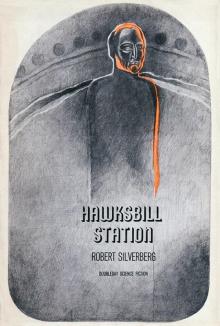 Hawksbill Station
Hawksbill Station A Time of Changes
A Time of Changes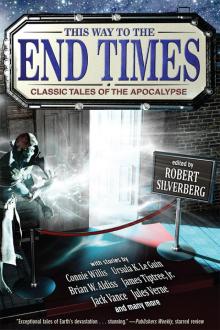 This Way to the End Times: Classic Tales of the Apocalypse
This Way to the End Times: Classic Tales of the Apocalypse Beyond the Gate of Worlds
Beyond the Gate of Worlds Lord Valentine's Castle
Lord Valentine's Castle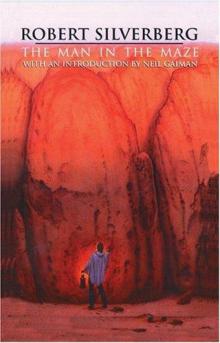 The Man in the Maze
The Man in the Maze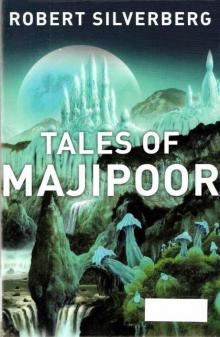 Tales of Majipoor
Tales of Majipoor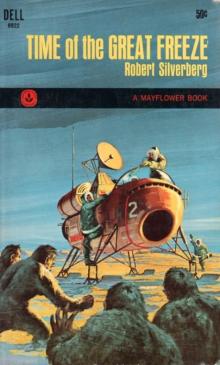 Time of the Great Freeze
Time of the Great Freeze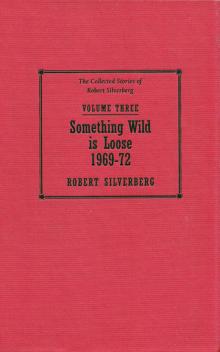 The Collected Stories of Robert Silverberg, Volume 3: Something Wild Is Loose: 1969-72
The Collected Stories of Robert Silverberg, Volume 3: Something Wild Is Loose: 1969-72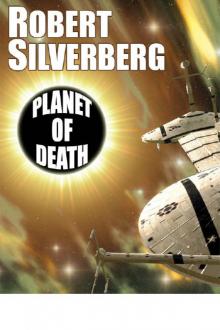 Planet of Death
Planet of Death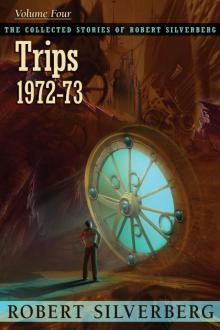 Trips: The Collected Stories of Robert Silverberg, Volume Four
Trips: The Collected Stories of Robert Silverberg, Volume Four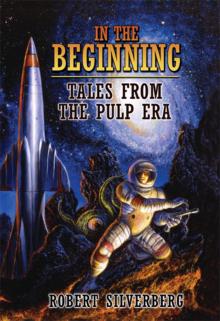 In the Beginning: Tales From the Pulp Era
In the Beginning: Tales From the Pulp Era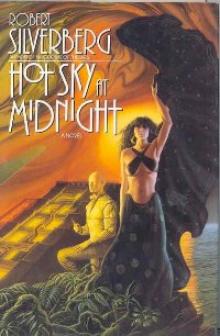 Hot Sky at Midnight
Hot Sky at Midnight Valentine Pontifex
Valentine Pontifex Up the Line
Up the Line Thorns
Thorns Amanda and the Alien
Amanda and the Alien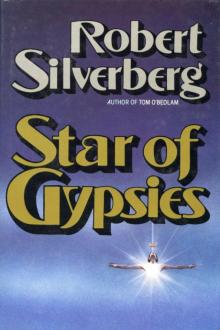 Star of Gypsies
Star of Gypsies Nightwings
Nightwings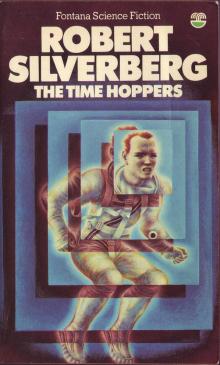 The Time Hoppers
The Time Hoppers Blood on the Mink
Blood on the Mink Dying Inside
Dying Inside The Last Song of Orpheus
The Last Song of Orpheus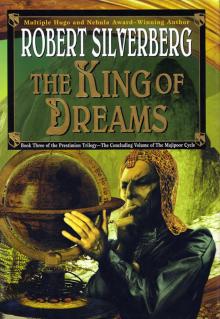 The King of Dreams
The King of Dreams The Stochastic Man
The Stochastic Man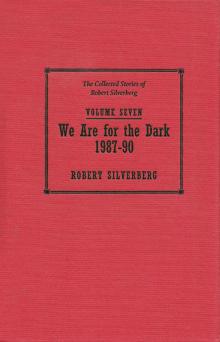 The Collected Stories of Robert Silverberg, Volume Seven: We Are for the Dark
The Collected Stories of Robert Silverberg, Volume Seven: We Are for the Dark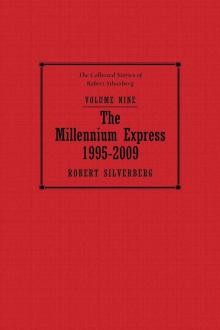 The Millennium Express: The Collected Stories of Robert Silverberg, Volume Nine
The Millennium Express: The Collected Stories of Robert Silverberg, Volume Nine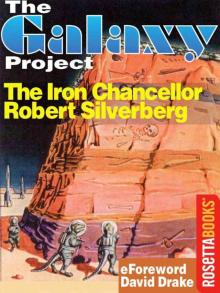 The Iron Chancellor
The Iron Chancellor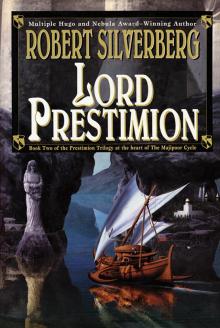 Lord Prestimion
Lord Prestimion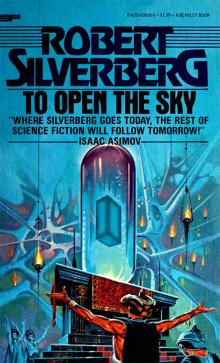 To Open the Sky
To Open the Sky The World Inside
The World Inside Chains of the Sea
Chains of the Sea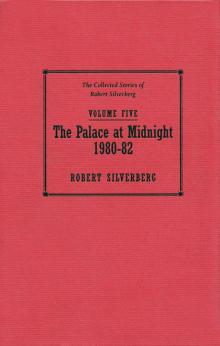 The Collected Stories of Robert Silverberg, Volume Five: The Palace at Midnight
The Collected Stories of Robert Silverberg, Volume Five: The Palace at Midnight Postmark Ganymede
Postmark Ganymede The Second Trip
The Second Trip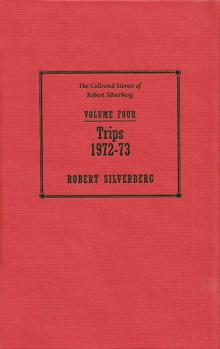 The Collected Stories of Robert Silverberg, Volume 4: Trips: 1972-73
The Collected Stories of Robert Silverberg, Volume 4: Trips: 1972-73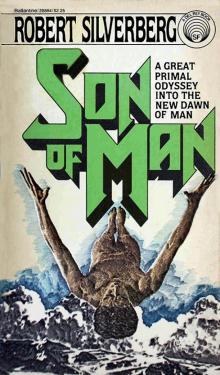 Son of Man
Son of Man Tom O'Bedlam
Tom O'Bedlam To the Land of the Living
To the Land of the Living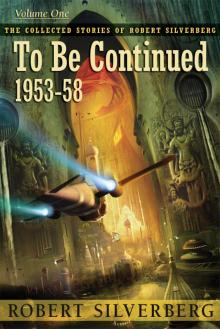 To Be Continued: The Collected Stories of Robert Silverberg, Volume One
To Be Continued: The Collected Stories of Robert Silverberg, Volume One Shadrach in the Furnace
Shadrach in the Furnace The Chalice of Death: Three Novels of Mystery in Space
The Chalice of Death: Three Novels of Mystery in Space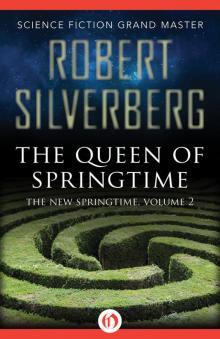 The Queen of Springtime
The Queen of Springtime To Be Continued 1953-1958
To Be Continued 1953-1958 Legends
Legends Roma Eterna
Roma Eterna To Live Again
To Live Again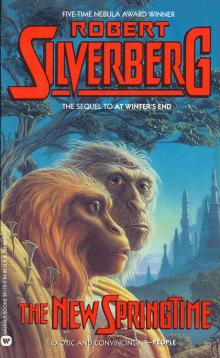 At Winter's End
At Winter's End Needle in a Timestack
Needle in a Timestack To Live Again and the Second Trip: The Complete Novels
To Live Again and the Second Trip: The Complete Novels Lord of Darkness
Lord of Darkness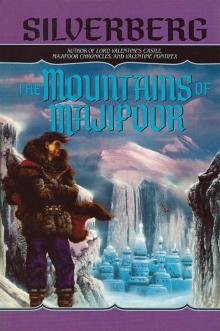 The Mountains of Majipoor
The Mountains of Majipoor The World Outside
The World Outside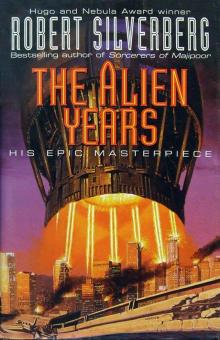 The Alien Years
The Alien Years The Book of Skulls
The Book of Skulls The Face of the Waters
The Face of the Waters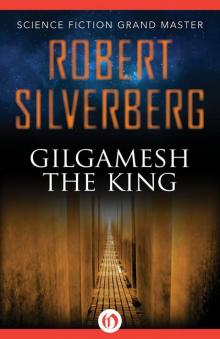 Gilgamesh the King
Gilgamesh the King The Collected Stories of Robert Silverberg, Volume 6: Multiples: 1983-87
The Collected Stories of Robert Silverberg, Volume 6: Multiples: 1983-87 The Happy Unfortunate
The Happy Unfortunate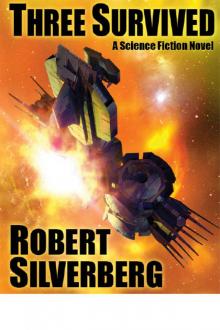 Three Survived
Three Survived Cronos
Cronos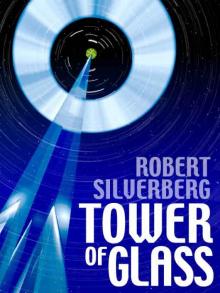 Tower of Glass
Tower of Glass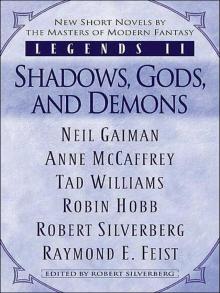 Legends II
Legends II The Planet Killers
The Planet Killers The Collected Stories of Robert Silverberg, Volume 2: To the Dark Star: 1962-69
The Collected Stories of Robert Silverberg, Volume 2: To the Dark Star: 1962-69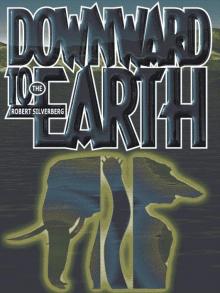 Downward to the Earth
Downward to the Earth Lord Valentine's Castle: Book One of the Majipoor Cycle
Lord Valentine's Castle: Book One of the Majipoor Cycle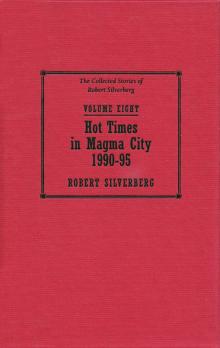 Hot Times in Magma City, 1990-95
Hot Times in Magma City, 1990-95 Hunt the Space-Witch! Seven Adventures in Time and Space
Hunt the Space-Witch! Seven Adventures in Time and Space Majipoor Chronicles
Majipoor Chronicles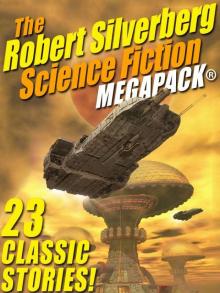 The Robert Silverberg Science Fiction Megapack(r)
The Robert Silverberg Science Fiction Megapack(r)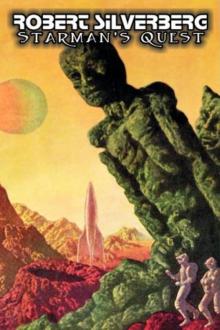 Starman's Quest
Starman's Quest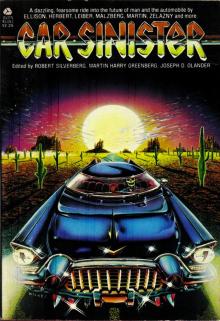 Car Sinister
Car Sinister Worlds of Maybe
Worlds of Maybe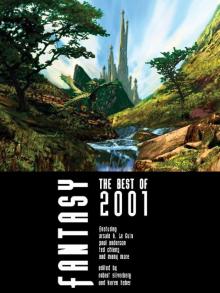 Fantasy The Best of 2001
Fantasy The Best of 2001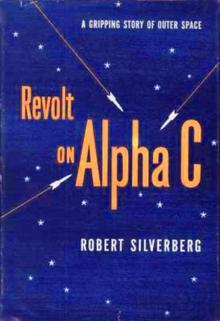 Revolt on Alpha C
Revolt on Alpha C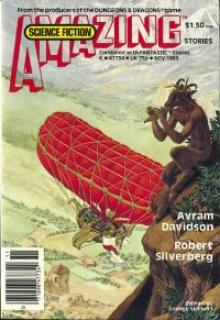 Homefaring
Homefaring The Pardoner's Tale
The Pardoner's Tale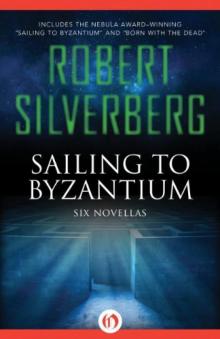 Sailing to Byzantium - Six Novellas
Sailing to Byzantium - Six Novellas The Chalice of Death
The Chalice of Death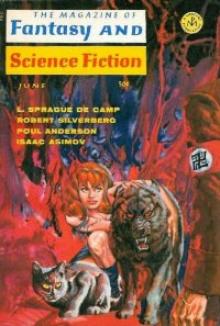 Sundance
Sundance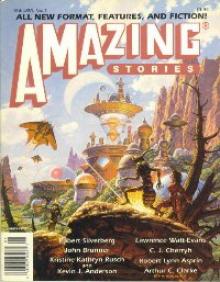 A Tip on a Turtle
A Tip on a Turtle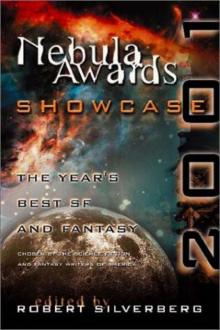 Nebula Awards Showcase 2001: The Year's Best SF and Fantasy Chosen by the Science Fiction and Fantasy Writers of America
Nebula Awards Showcase 2001: The Year's Best SF and Fantasy Chosen by the Science Fiction and Fantasy Writers of America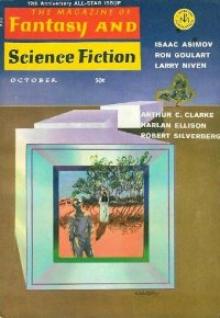 The Fangs of the Trees
The Fangs of the Trees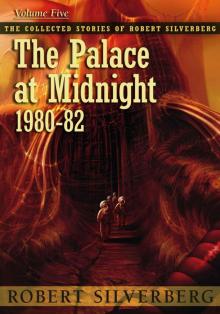 The Palace at Midnight: The Collected Work of Robert Silverberg, Volume Five
The Palace at Midnight: The Collected Work of Robert Silverberg, Volume Five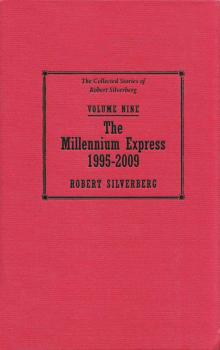 The Millennium Express - 1995-2009 - The Collected Stories of Robert Silverberg Volume Nine
The Millennium Express - 1995-2009 - The Collected Stories of Robert Silverberg Volume Nine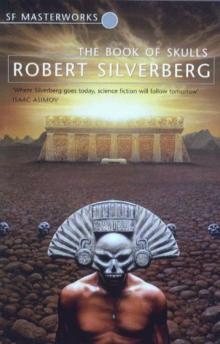 Book of Skulls
Book of Skulls Passengers
Passengers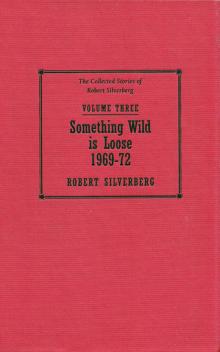 Something Wild is Loose - 1969–72 - The Collected Stories of Robert Silverberg Volume Three
Something Wild is Loose - 1969–72 - The Collected Stories of Robert Silverberg Volume Three Multiples
Multiples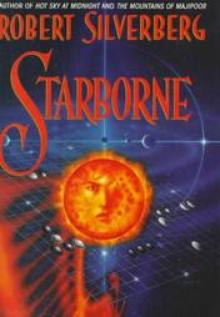 Starborne
Starborne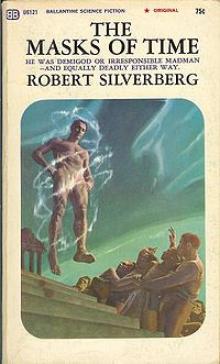 The Masks of Time
The Masks of Time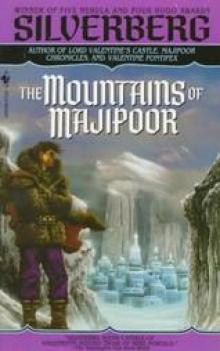 The Mountains of Majipoor m-8
The Mountains of Majipoor m-8 Multiples (1983-87)
Multiples (1983-87) Those Who Watch
Those Who Watch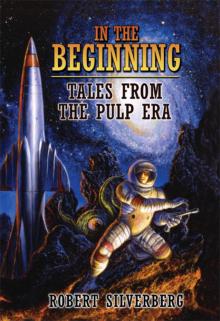 In the Beginning
In the Beginning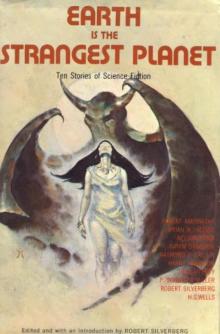 Earth Is The Strangest Planet
Earth Is The Strangest Planet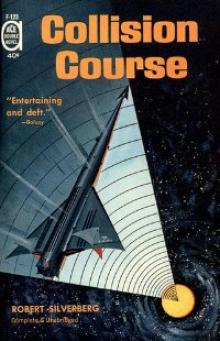 Collision Course
Collision Course Neutral Planet
Neutral Planet To the Dark Star - 1962–69 - The Collected Stories of Robert Silverberg Volume Two
To the Dark Star - 1962–69 - The Collected Stories of Robert Silverberg Volume Two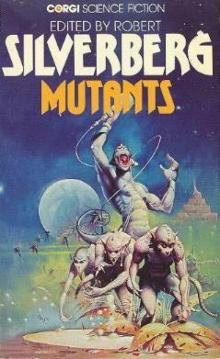 Mutants
Mutants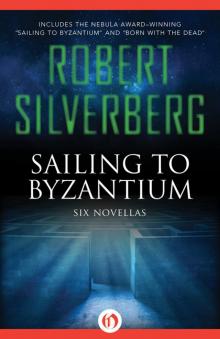 Sailing to Byzantium
Sailing to Byzantium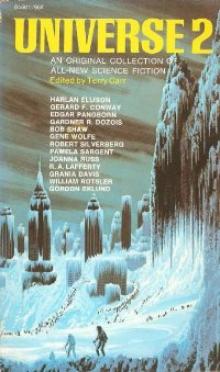 When We Went to See the End of the World
When We Went to See the End of the World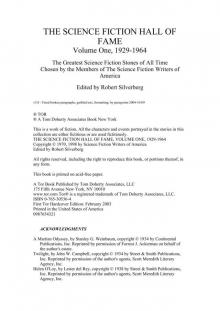 Robert Silverberg The Science Fiction Hall Of Fame Volume One, 1929-1964
Robert Silverberg The Science Fiction Hall Of Fame Volume One, 1929-1964 To Be Continued - 1953–58 - The Collected Stories of Robert Silverberg Volume One
To Be Continued - 1953–58 - The Collected Stories of Robert Silverberg Volume One Valentine Pontifex m-3
Valentine Pontifex m-3 Gianni
Gianni Majipoor Chronicles m-2
Majipoor Chronicles m-2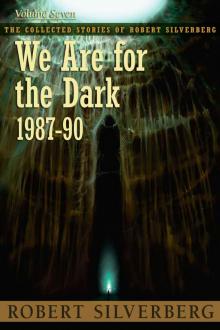 We Are for the Dark (1987-90)
We Are for the Dark (1987-90) Waiting for the Earthquake
Waiting for the Earthquake Fantasy: The Best of 2001
Fantasy: The Best of 2001 How It Was When the Past Went Away
How It Was When the Past Went Away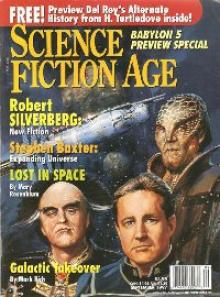 Beauty in the Night
Beauty in the Night The Man Who Never Forgot
The Man Who Never Forgot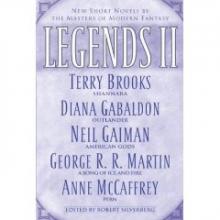 The Book of Changes m-9
The Book of Changes m-9 Lord Valentine's Castle m-1
Lord Valentine's Castle m-1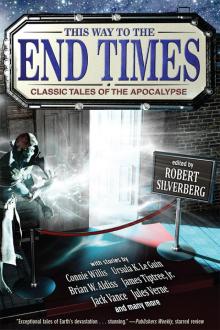 This Way to the End Times
This Way to the End Times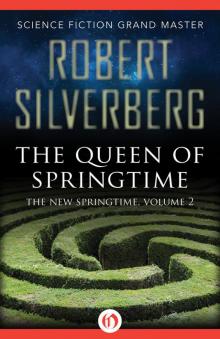 Queen of Springtime
Queen of Springtime Legends-Volume 3 Stories by the Masters of Modern Fantasy
Legends-Volume 3 Stories by the Masters of Modern Fantasy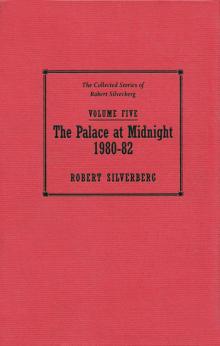 The Palace at Midnight - 1980–82 - The Collected Stories of Robert Silverberg Volume Five
The Palace at Midnight - 1980–82 - The Collected Stories of Robert Silverberg Volume Five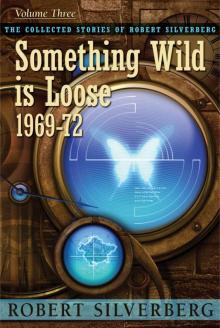 Something Wild is Loose: The Collected Stories of Robert Silverberg, Volume Three
Something Wild is Loose: The Collected Stories of Robert Silverberg, Volume Three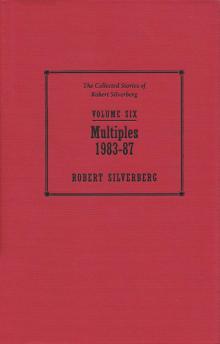 Multiples - 1983–87 - The Collected Stories of Robert Silverberg Volume Six
Multiples - 1983–87 - The Collected Stories of Robert Silverberg Volume Six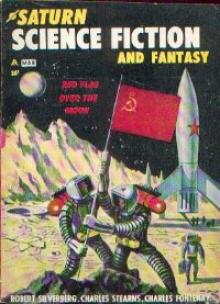 Alaree
Alaree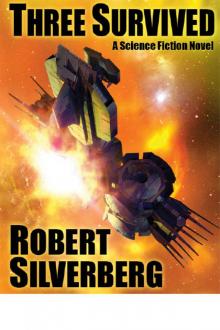 Three Survived: A Science Fiction Novel
Three Survived: A Science Fiction Novel Defenders of the Frontier
Defenders of the Frontier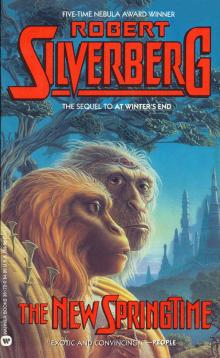 The New Springtime
The New Springtime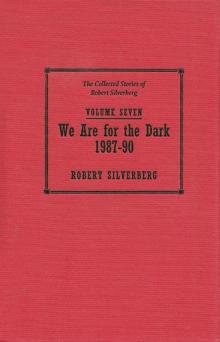 We Are for the Dark - 1987–90 - The Collected Stories of Robert Silverberg Volume Seven
We Are for the Dark - 1987–90 - The Collected Stories of Robert Silverberg Volume Seven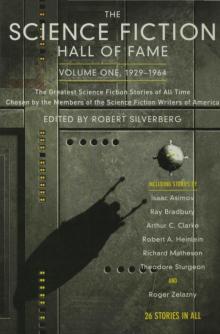 The Science Fiction Hall of Fame, Volume One 1929-1964--The Greatest Science Fiction Stories of All Time Chosen by the Members of the Science Fiction Writers of America
The Science Fiction Hall of Fame, Volume One 1929-1964--The Greatest Science Fiction Stories of All Time Chosen by the Members of the Science Fiction Writers of America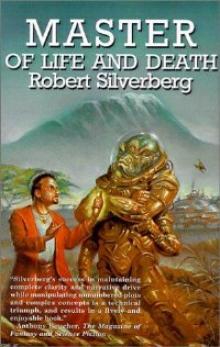 Master Of Life And Death
Master Of Life And Death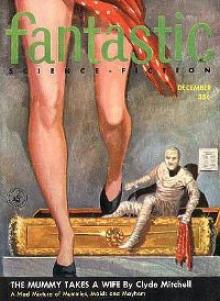 Choke Chain
Choke Chain Sorcerers of Majipoor m-4
Sorcerers of Majipoor m-4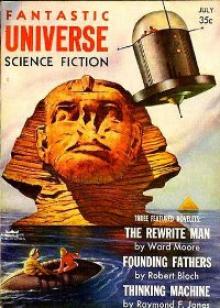 Absolutely Inflexible
Absolutely Inflexible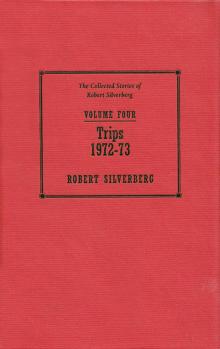 Trips - 1962–73 - The Collected Stories of Robert Silverberg Volume Four
Trips - 1962–73 - The Collected Stories of Robert Silverberg Volume Four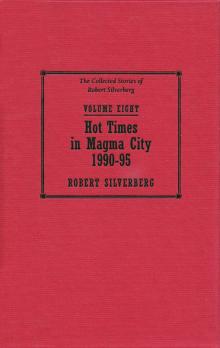 Hot Times in Magma City - 1990-95 - The Collected Stories of Robert Silverberg Volume Eight
Hot Times in Magma City - 1990-95 - The Collected Stories of Robert Silverberg Volume Eight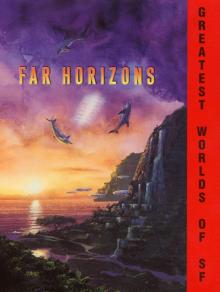 Far Horizons
Far Horizons The Queen of Springtime ns-2
The Queen of Springtime ns-2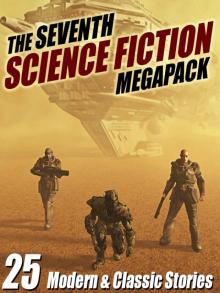 The Seventh Science Fiction Megapack
The Seventh Science Fiction Megapack Invaders From Earth
Invaders From Earth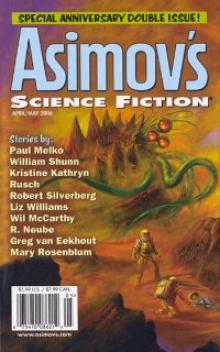 Hanosz Prime Goes To Old Earth
Hanosz Prime Goes To Old Earth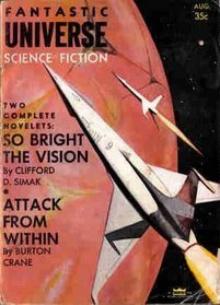 The Macauley Circuit
The Macauley Circuit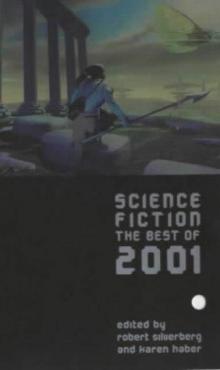 Science Fiction: The Best of 2001
Science Fiction: The Best of 2001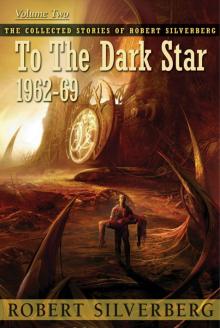 To the Dark Star: The Collected Stories of Robert Silverberg, Volume Two
To the Dark Star: The Collected Stories of Robert Silverberg, Volume Two Stochastic Man
Stochastic Man Legends: Stories By The Masters of Modern Fantasy
Legends: Stories By The Masters of Modern Fantasy To Live Again And The Second Trip
To Live Again And The Second Trip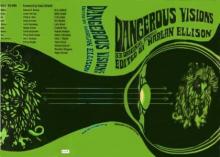 Flies
Flies The Silent Invaders
The Silent Invaders Ship-Sister, Star-Sister
Ship-Sister, Star-Sister